NXP puts on its technology days event in several cities to familiarize design engineers with trends in new technology and design practices. We got a chance to visit the event in the Detroit area where it had a heavy automotive feel. Though the main focus for the two-day Detroit event was automotive technology, there were plenty of other sessions on crypto security, working with an RTOS, and other general computing disciplines. The event also included numerous technology lab demos. Here are some of the more notable sessions and demos we experienced in Detroit.
News flash: Nearly every rule of thumb is wrong
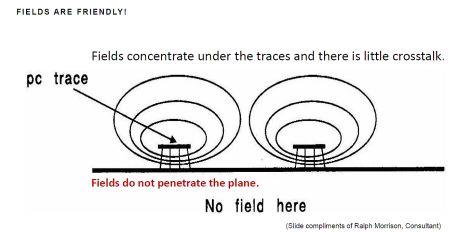 One of the more eye-opening sessions came from NXP technical director Dan Beeker who discussed EMI problems on PCBs. Beeker points out circuit theory suggests that wires carry energy and the load instantly affects the flow of energy, and that switches add conductors, and current instantly starts to move in a loop around a circuit. Not so fast, says Beeker: Switches actually add new spaces and a moving field carries the energy. It takes time for the field energy to move into that space, and current flow is actually comprised of field energy moving through a space. This difference in perspective plays a huge role in correcting signal integrity problems. Another insight: Bypass capacitors don’t bypass anything. They store and release energy and act like open-ended transmission lines. And the dielectric between the leads must be exposed to the PCB dielectric. There were few empty seats in the version of Beeker’s presentation we attended, and most attendees stayed for the full three-hour lecture.
One of the more eye-opening sessions came from NXP technical director Dan Beeker who discussed EMI problems on PCBs. Beeker points out circuit theory suggests that wires carry energy and the load instantly affects the flow of energy, and that switches add conductors, and current instantly starts to move in a loop around a circuit. Not so fast, says Beeker: Switches actually add new spaces and a moving field carries the energy. It takes time for the field energy to move into that space, and current flow is actually comprised of field energy moving through a space. This difference in perspective plays a huge role in correcting signal integrity problems. Another insight: Bypass capacitors don’t bypass anything. They store and release energy and act like open-ended transmission lines. And the dielectric between the leads must be exposed to the PCB dielectric. There were few empty seats in the version of Beeker’s presentation we attended, and most attendees stayed for the full three-hour lecture.
All the better to hear you when there’s a rock band in the back seat
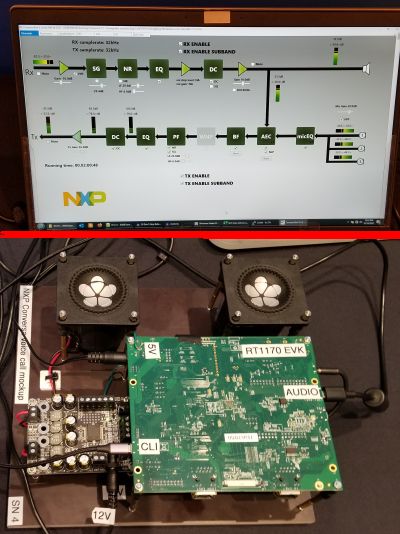
One demo we saw covered the NXP Conversa voice processing suite designed to boost the sound quality for speakerphone and headset applications. The demo ran on an NXP RT1170 processor which is a relatively low-end device, meant to illustrate that the app doesn’t require much in the way of computing resources. Two loudspeakers visible here served as the source of audio. Conversa typically uses between two and four microphones to implement adaptive multi-mic beamforming and isolate the target voice in the presence of noise. Also implemented is acoustic echo cancellation, advanced dereverberation, and noise reduction. A real-time PC=based tuning tool, illustrated here on the laptop screen, lets developers tweak the uplink and downlink audio chain.
If you hit a tree in a simulation, does it make a sound?
Automotive simulation supplier dSpace had one of the more visual displays in the technology lab. NXP and dSPACE work on SIL and HIL test systems for autonomous driving, allowing the integration of radar sensor models into a simulation environment for data generation at various abstraction levels (detection list, raw data). NXP and dSPACE cooperate on developing software modules for TargetLink, the dSPACE production code generator. This lets dSPACE offer optimization and simulation modules as soon as NXP launches a new processor.
On the level with headlights
One of the automotive applications for single-chip accelerometers these days is in automatic headlight leveling. That’s the demo NXP software engineering leader Amit Purohit took us through in this short video where the accelerometer serves as an inclinometer to automatically keep lights aimed at the road ahead.
What’s new in automotive radar
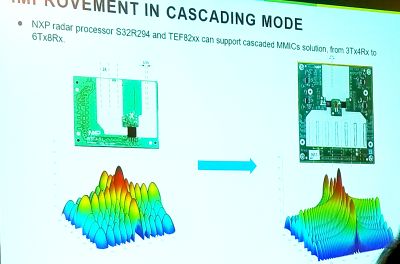
A lot of material at Technology Days related to new developments in automotive radar. The main NXP chip in this area is the TEF82xx RFCMOS FMCW transceiver. This device integrates three transmit and four receive channels as well as a six-phase rotator. One function made possible by this architecture, discussed on this slide, is cascading of the transceivers.
Cascade radar provides higher angle resolution and longer detection range while supporting MIMO and TX beamforming. The idea is to use one transceiver as the main device while the others on the chip follow it. All the transceivers work from the same LO.
Who’s that? Image processing can tell
As you might imagine, a lot of automotive research these days centers on image processing. An example of a development system in this area is from Future Electronics. Called the Cyclops system, it consists of a converter board that connects the Foxlink FM10FF-724H camera module and the NXP i.MX8M mini evaluation board (8MMINILPD4-EVKB) to form an image evaluation platform.
E-scooters for future mobility
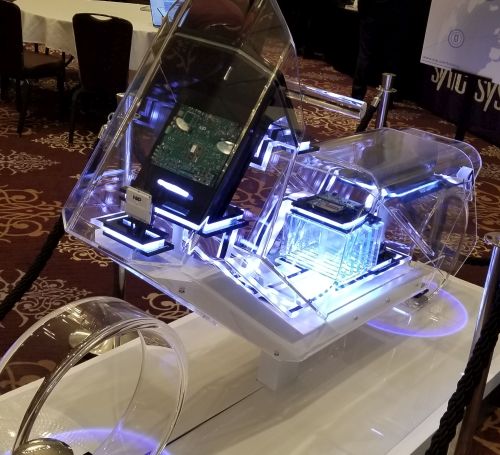
NXP does a lot in the mobility space, and this mock up of an e-scooter was meant to highlight areas where NXP has products. Attendees eye balling this thing could see a battery management system, a display and connectivity controller, an on-board charger, tire-pressure monitoring, and even a low-voltage traction inverter.
Architecting software-defined vehicles
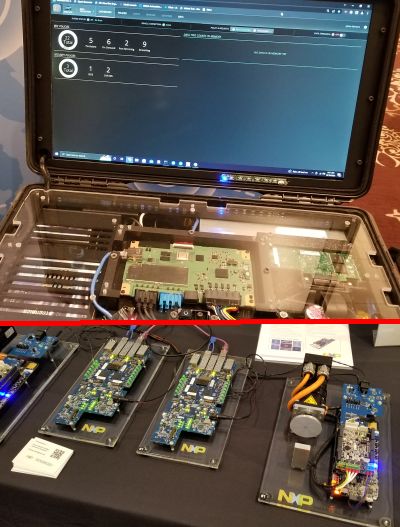
Sonatus specializes in the software part of the software-defined vehicle. It was on the conference agenda discussing zonal controller architectures. It had a demo running that featured connections to motor controllers and other peripherals as you might find in a connected vehicle. The Sonatus Digital Dynamics platform provides dynamic data management, in-vehicle network management (including computing resources, bandwidth), V2C communications, security, and vehicle automation. Its software is hardware agnostic and can run in low-speed systems with limited computing capacity.






